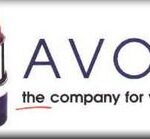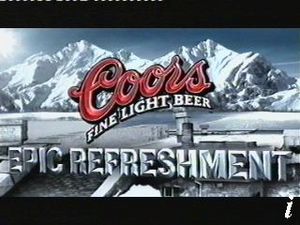Sparks, Beatrice, ed. Go Ask Alice. New York: Simon, 1971.
Hardcover Trim Size: 5.68 x 8.57 x 0.73
Hardcover Pages: 192
Sparks, Beatrice, ed. Go Ask Alice. New York: Avon, 1991.
Paperback Trim Size: 0.48 x 6.97 x 4.19
Paperback Pages: 192
Awards: YALSA 100 Best Books (1950-2000) , YALSA Popular Paperbacks for Young Adults
Summary: Fictional diary of a teenage drug user’s downward spiral into an addiction that takes over her life and drags her through tragic experiences.
Personal Response: This book was originally published anonymously as a true journal. Knowing this, it becomes obvious that the content is so extreme because it is being used as a scare tactic to keep young adults away from drugs. The journal format could have been effective without insulting the reader’s intelligence by touting it as a real person’s journal rather than a fictional one based on the editor’s experiences with troubled teens. Nonetheless, the book is effectively disturbing and elicits a mix of pity and anger toward the characters.
Quality: 4Q – The book’s stream-of-consciousness style is appealing.
Popularity: 5P – I did not find a single negative review by a young reader. Additionally, it is still a top seller at both Barnes & Noble and Amazon.com.
Audience: Even though younger readers will be able to handle the writing, a mature 15+ is probably the most appropriate age range for this book because of the strong drug and sexual content and language used. Girls will relate better to the main character than will boys because the peer pressure situations are specific to those that teenage females experience.
Rationale for Using in the Classroom: Go Ask Alice is a valuable tool for introducing young readers to personal writing as literature, as well as to realistic situations in literature. While the subject matter is weighty and considered highly controversial, the book in no way glamorizes the destructive choices that the main character makes. If anything, the story will steer readers away from a similar lifestyle. The personal narrative/journal format of the book allows the reader to get to know the main character in a way that is sometimes more difficult in more straightforward third person stories. In evaluating the book, students should closely examine the characters and how their behavior and decisions affect the tragic outcome of the book. This will enable students to accurately identify character flaws and strengths in future reading and recognize character as a fundamental literary element.
Introducing to Young Readers: This book would be best introduced as part of a unit on personal narrative or character study. One should note the “hot” subject matter adequately enough that students are prepared for it, and possibly intrigued by it, without creating the feeling that studying the book will include a behavioral sermon from the instructor. A good idea may be to ask students about their own journal keeping and mention that there are many books written in this format. Perhaps reading the book could directly follow or precede a personal writing assignment.
Booktalk: A booktalk should include a section from the beginning of the novel as well as one closer to the end of the story. The first entry in the journal, or any from pages 1 – 5 of the paperback edition, would be a fair portrayal of the main character at the beginning of her story – full of typical youthful excitements and anxieties. A passage from any of the entries from pages 99 – 108 will provide a point of comparison between the narrator before and after she has been consumed by drugs. Reading these excerpts aloud can prompt a discussion about the changes that can be noted in the writing and tone of the main character as she develops/deteriorates.
Activities: Activities that may enhance the reading experience may include:
1. Discussion: How has “Alice” changed since the beginning of the book (After reading passages noted above)? What choices could she have made differently? Do you think that this is a true story? Compare Alice to the other characters in the story. How does her relationship with her parents change? Do you like Alice? (To encourage participation in discussion, divide students into groups and assign each group a specific topic/question to present for discussion).
2. Writing: Write a journal entry from the point of view of another character in the story. Write a better ending to the story. Write “Alice’s” eulogy. Write stream-of-consciousness/free writing piece in the style of the book.
3. The title of this book is based on Grace Slick’s song “White Rabbit.” Listen to this song and draw comparisons between the lyrics and the story. Discuss the allusion to “Alice in Wonderland.” Listen to and discuss other songs related to the drug culture of the 1960’s and 1970’s. Have students bring in modern music with the same theme.
Alternatives:
1. Ellen Wittlinger, Hard Love – An alternative with less objectionable language, this problem novel is also a good writing and character study. The main character embodies the same angst and release in writing that “Alice” does. It may be better to recommend if a student’s parents have trouble with Go Ask Alice, or a more modern alternative if a reader is unable to connect with the somewhat outdated references and slang in the book. This is also a great alternative for boys who have no interest in reading a story narrated by a girl.
2. Paul Fleischman, Mind’s Eye – A much more lighthearted alternative, this problem novel also examines the common problems that teenagers face, with these issues compounded by the main character’s disability after a car accident. It is written in an interesting way, as is Go Ask Alice, but it is a good alternative if content is too disturbing for a reader. If a reader is not fond enough of “Alice” to complete the reading, the characters in Mind’s Eye are more likeable.
3. Susanna Kaysen, Girl, Interrupted – This adult novel deals with the same subject matter as Go Ask Alice – a young heroine’s self-doubt and poor choices in dealing with it. However, it is a more straightforward first-person narrative that readers who have trouble reading the journal style may enjoy more. It is also slightly more upbeat and solution-seeking and was written as a true reflection on the author’s experiences rather than a somewhat obvious scare tactic. Great for readers who see through Sparks’ intention in writing Go Ask Alice.



